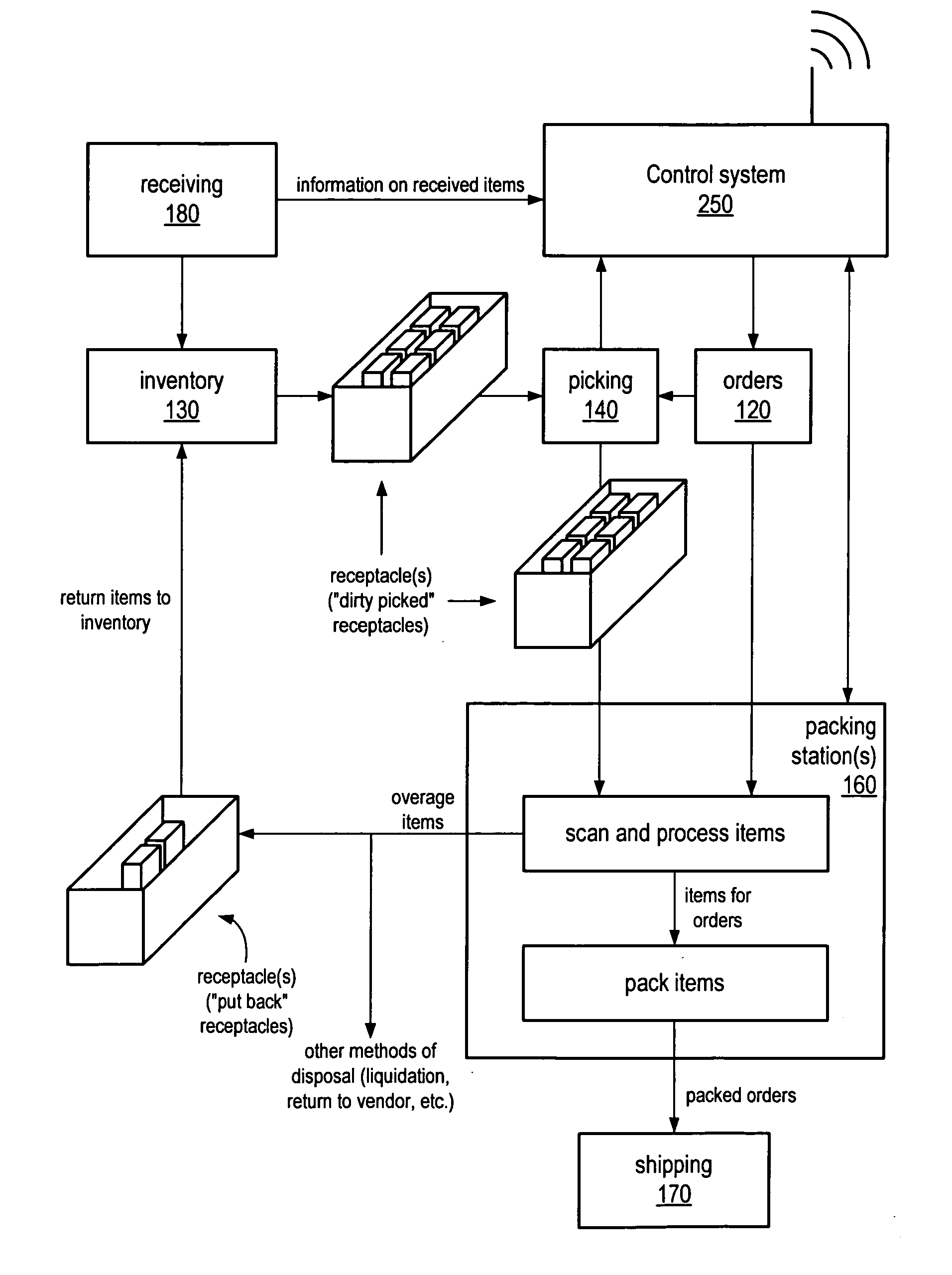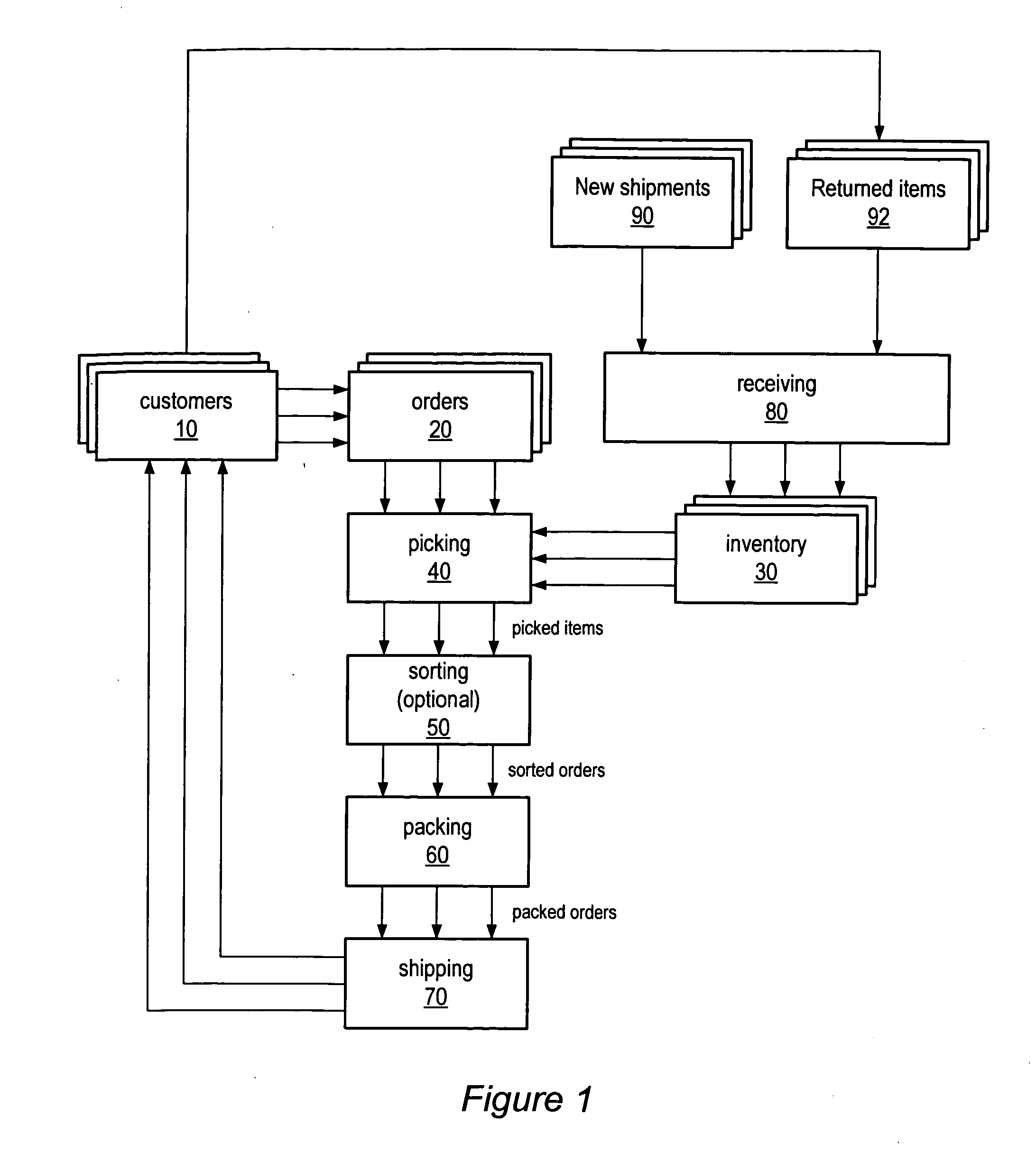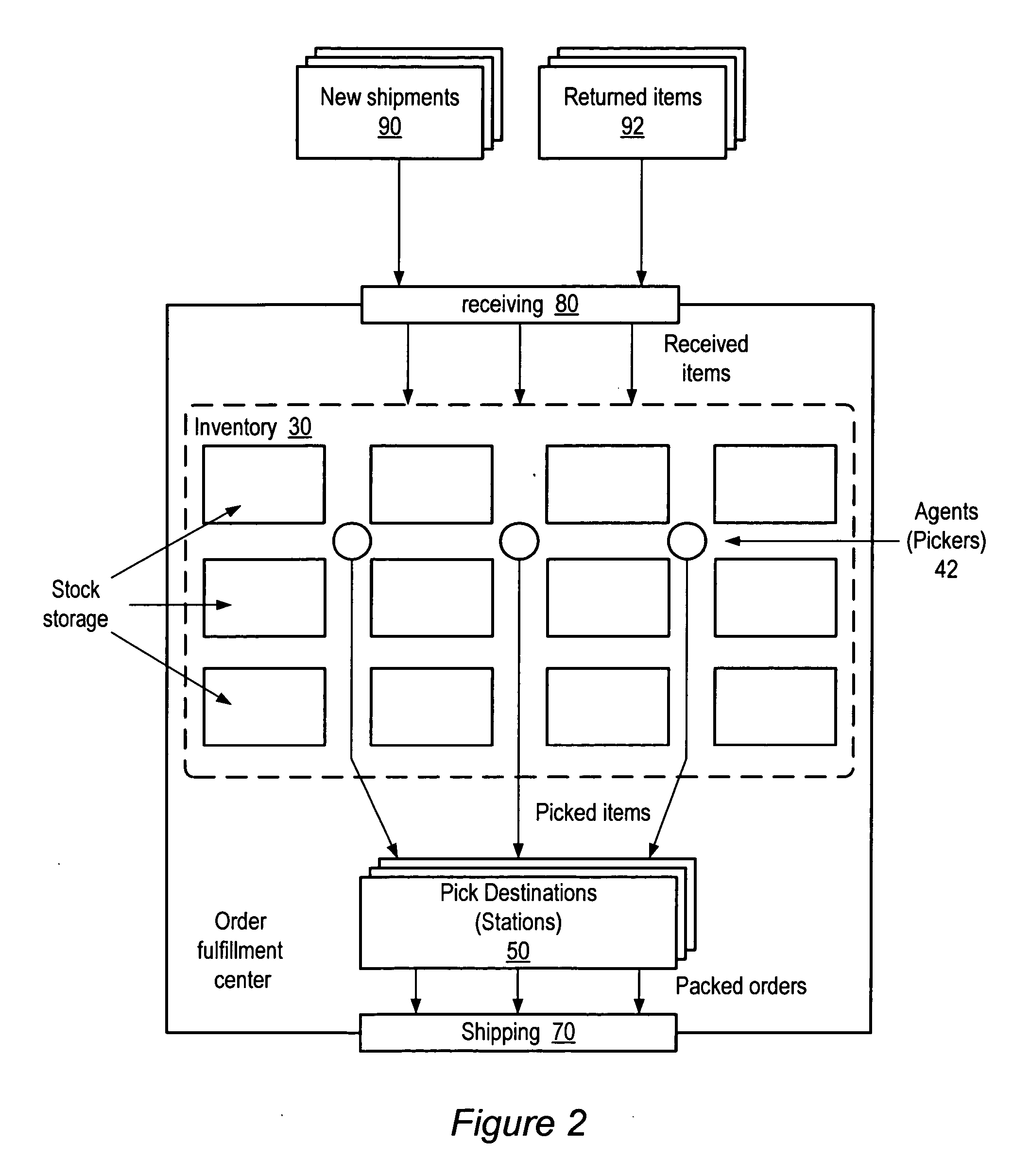[0019] In one embodiment, dirty picking of receptacles from stock storage in an
order fulfillment center may provide improved pick rates through the reduction or minimization of time spent at a receptacle, for example in a facility that implements “random-stow” or a similar inventory storage mechanism. Searching for specific titles or items at a receptacle is
time consuming, and is instead replaced with picking the entire receptacle including multiple, and possibly heterogeneous, items and processing each item in the receptacle exactly once. In one embodiment, dirty picking may save a secondary receptacle-consolidation step for lingering or aging items in receptacles in inventory. The “overage”, or unneeded, picks may be picked from the receptacle with the other items and later consolidated, returned to inventory or disposed through liquidation, vendor returns, etc.
[0020] In one embodiment, dirty picking may be applied to shipments of new inventory received at a receiving
station of a materials handling facility. In some operational processes, there may be receptacles (e.g., containers) with heterogeneous products being received into a materials handling facility where a portion of the contents will be shipped immediately to customers, and a remainder of the contents may need to be stored in the materials handling facility rather than being shipped to customers immediately, even if at time of initially placing the items in the receptacle, all of the contents were intended for customer shipping. Using dirty picking, a receptacle or the contents of a receptacle may be “dirty picked” directly to an
order processing station, where items for orders in the shipments may be separated from overage items that may later be placed in inventory. Thus, dirty picking of shipments received at the materials handling facility may reduce or eliminate the need to process individual items in receiving, stow the items in inventory, and then pick the items from inventory by facilitating the “cross-docking” of received items to an
order processing station.
[0021] In at least some materials handling facilities, items may be returned by customers and processed upon arrival at a receiving area or station. At least some of the returned items may be items that have been subsequently ordered by other customers, and thus which, if possible, could be shipped out again immediately. In one embodiment, rather than restocking the returned items and re-picking the items from inventory, as is conventionally done in materials handling facilities, “expedited” receptacles including received, possibly heterogeneous, returned items may be moved or conveyed from receiving to a “downstream”
order processing station, and processed as if all the returned items in the receptacles have been ordered, rather than restocking the items into inventory for later picking. Note that, in some materials handling facilities, the same physical location or “station” may be used to receive items as is used to ship items, so a “receiving station” and an “order processing station” may be at the same physical location or “station”. In this case, the “expedited” receptacles may not have to be moved or conveyed from one station to another station. For simplicity, the order processing station may be considered a “downstream” station from the receiving station whether the two stations are at the same physical location or not. The downstream station may then separate the items that have been actually ordered from the overage items, and
set aside the overage items to be restocked. In one embodiment, to perform this separation, each item in the receptacle may be processed as if it were needed for a
customer order, and any overage items that are not needed for an order may be removed in accordance with an exception-handling process and
set aside. In one embodiment, the contents of the receptacle may be visually inspected and any item(s) in the receptacle that are needed for orders may be manually removed based on the inspection, or alternatively any overage item(s) not needed for orders may be removed and
set aside. In other embodiments, other mechanisms or methods may be used to separate ordered items from overage items in a receptacle. Dirty picking, in this case, may thus save the number of “touches” on returned items where some or a majority of the returned items may be immediately shipped back out by requiring that only overage items be restocked. Further, dirty picking of receptacles containing returned items may reduce the number of items that must be picked from inventory by satisfying orders, if possible, from “expedited” receptacles in preference to satisfying the orders from inventory.
 Login to View More
Login to View More  Login to View More
Login to View More 


